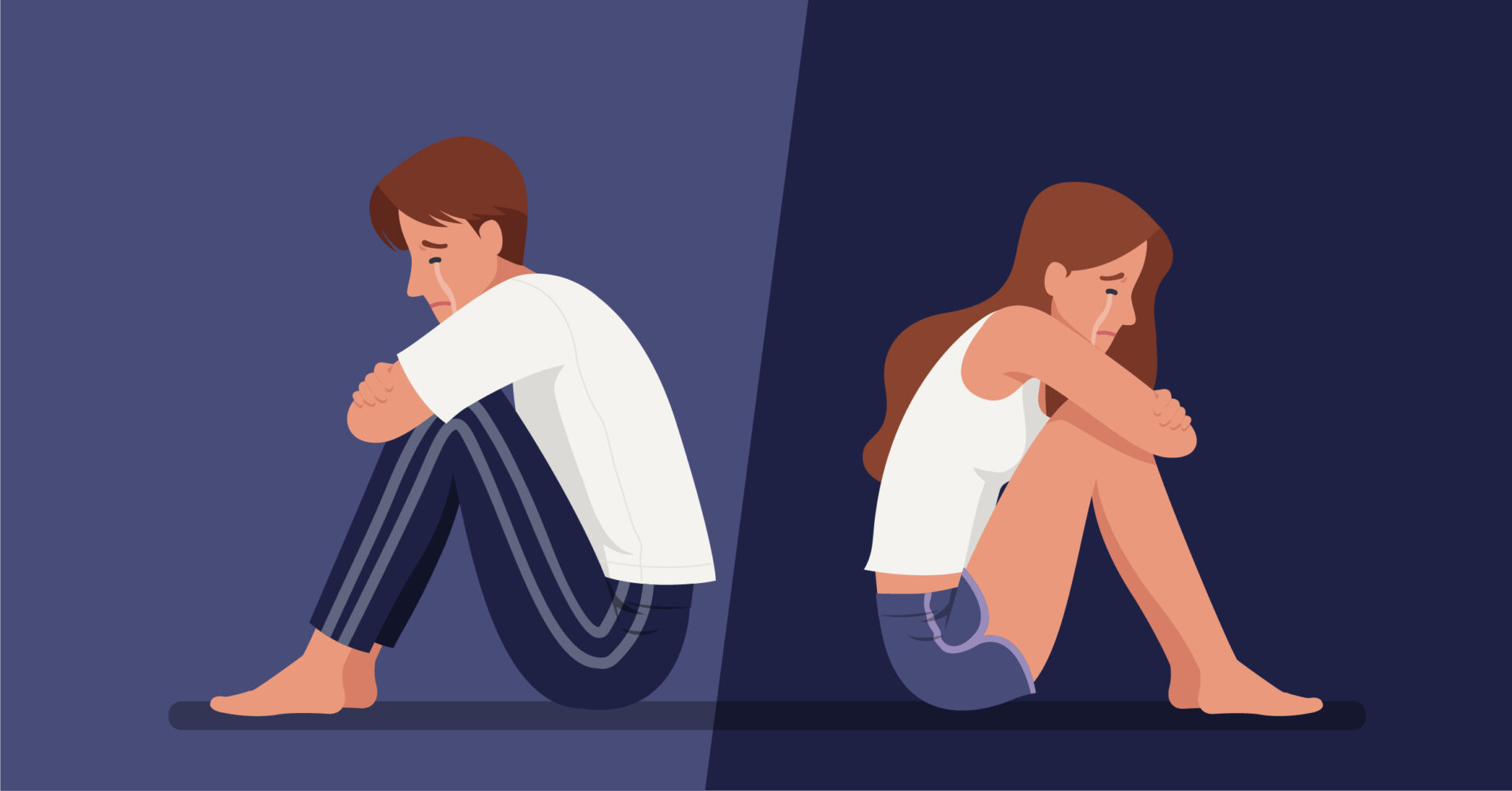In order to save lives, the topic of suicide needs to come out of the shadows. Numerous organisations are working to dispel misconceptions about the issue and shed light on it so that people in need feel at ease asking for assistance and can live life to the fullest.
There have been several studies conducted all around the world emphasising the health danger that occupational stress poses. Most experts concur that an unconstrained and excessive work stress and work environment is bad for a person’s mental health; stress can even trigger significant psychological disorders like melancholy and anxiety.
Terminologies
- Suicidal or non-suicidal thoughts and actions may be involved in intentional self-harm:
- Suicidal ideation is the term for having suicidal thoughts, which may also contain a plan.
- A suicide attempt is defined as self-harming conduct that is intended to result in death but does not.
- Suicide is a self-harming activity that is lethal and is intended to end one’s life.
- Suicide threat: verbalized thoughts of self-harming action designed to give the impression that someone wants to die, even though this is not the case (for example, “If you leave me, I’ll kill myself”).
- Suicide gestures are self-destructive behaviours that trick people into thinking a person wishes to terminate their life even when they have no such intention.
- Non-suicidal self-injurious thoughts involve contemplating self-harming conduct, defined as the purposeful destruction of bodily tissue for reasons that are not socially acceptable and without intent to harm oneself.
- Non-suicidal self-injury is an activity that results in the intentional destruction of body tissue for reasons that are not socially acceptable and without any intent to die.
While the working-age population, between the ages of 24-64, bears the brunt of suicide, most organisations are comparatively unprepared to support employees who are battling with suicidal thoughts or to help coworkers after am e,ployee has died due to suicide (CDC, 2010).
In contrast to part-time remote workers and those who do not work from home, full-time remote workers reported higher degrees of burnout, according to a 2020 Gallup study. Depression and burnout may go hand in hand. Suicidal thoughts may arise as a result of severe or protracted depression.
When close friends, colleagues, suppliers, and other members of the work team commit suicide or attempt suicide, it has an impact on the employees. Many people are unsure of how to react to a coworker whose family has experienced a suicide death owing to the stigma attached to the disease. Leaving suicide deaths unattended or handled badly by corporate leaders typically results in a decline in productivity and workplace morale, in addition to the enormous human cost.
Furthermore, untreated mental illness and suicidal behaviour can raise medical expenses. The surviving coworkers are frequently left with a mixture of sadness, trauma, and guilt that can last for a very long time when one employee commits suicide.

No more struggling for healthy work-life balance
The deeper you heal, the better you’ll feel
More people are in danger of suffering from worsening mental health and an increase in suicidal thoughts and actions while the world fights an ongoing pandemic. More than ever, businesses must assess their contribution to avoiding suicide fatalities, plan how to support people contemplating suicide, and evaluate how successfully they support survivors of suicide after a coworker has died.
Employee work experiences, comprising professional features (such as satisfaction, liberty, and diversity) and social interactions with coworkers, comprise a crucial component of any organisation.
Consider the 13 employees at the Chinese manufacturing giant Foxconn who committed suicide or attempted suicide in response to their harsh working circumstances or the 35 employees at the French-based telecommunications business Orange who committed suicide as a result of manager bullying. These incidents are a stark reminder of the damaging consequences that the occupational stress may have on workers’ psyches and actions, which can ultimately lead to suicide.
The main factors contributing to conduct related to suicide are social and psychological suffering. According to the interpersonal theory of suicide, social suffering happens when people cannot form deep relationships or feel like a burden to others. The psychache theory of suicide, on the other hand, focuses on psychological pain that is comparable to mental suffering or great sorrow. People who suffer from either kind of agony may take their own lives to end their misery, especially if they believe that nothing can change or that there is no hope.
Offices are, by nature, social institutions. While they may foster a sense of belonging, they may also give rise to emotions of psychological and social anguish. Numerous factors, including interpersonal relationships, work-family conflict, work stress unstable employment, unemployment, burnout, fatigue, job demands (such as workload,, scheduling), job characteristics (such as meaningfulness, autonomy, variety), and the physical work environment, were found to be significant predictors of suicide-related thoughts and behaviours among employees during our review of the literature (e.g., ergonomic and safety features).
As seen from this diverse list, any profession can lead to suicidal ideation; suicide indicators are not specific to one field or line of work. Social or psychological distress that results from negative characteristics of any employment might lead to suicidal feelings. Due to this, all businesses need to be aware of how they affect employees’ mental health and what steps they might take to prevent suicides. Additionally, employers must be ready to implement postvention efforts in the event of an employee’s suicide death.
Depression at work exists. Suicidal individuals frequently attempt to conceal their sentiments. Without first comprehending and assessing the patient’s state, a skilled clinician could find it difficult to identify depression in a patient. However, those who are depressed frequently exhibit warning signals.
To help you determine whether an employee might suffer from a mental ailment, look out for these seven employee suicidal warning signals in the workplace.
1. Consistently sad: If one or more of your employees are depressed and anxious, they may suffer from depression and anxiety. These people might exhibit the following signs:
- Reduction in appetite or compulsive eating
- Gain or loss of weight
- Vacillation and irritation
2 . Thinking difficulties: The workers are unable to maintain the deadlines and work expectations and may exhibit the following signs:
- Problems with focus
- Memory or decision-making
- Faulty judgement
3. Fatigue or loss of energy: The coworker might be physically worn out and losing vitality due to job tension and display the following signs:
- Difficulty executing a physical task due to exhaustion or a loss of energy
- Always missing the meeting or turning up late, complaining about being unable to get out of bed.
4. Reduced Productivity: Your worker is not able to meet the demands of the job and be able to perform.
- Issues with Maintaining morale at Home
- Absence of enthusiasm and cooperation
- Recurring workplace mishaps
5. Absenteeism: Frequent requests for time off without advance notice, complaints of persistent illness and unexplained aches and pains.
- Drug and alcohol abuse
- Lethargic and sleepy at work
- Taking unnecessary leaves
6. Suicidal statements: Making declarations of taking one’s own life indirect cue to others about their intentions.
- Searching, discussing, and posting about death a lot
- Declaring helplessness or hopelessness
- Consulting life insurance providers to inquire about plans and causes of death
7. Sleeping Difficulties: People who are dealing with stressful situations frequently develop sleeping disorders.
- Not being able to sleep at Night
- Employees with sleep issues could disregard their family, personal hygiene, and business deadlines.
It is essential to act immediately if five or more of the following symptoms are experienced by a person you know or someone at your place of employment.
Sameer is a 24-year-old employee who has been an IT developer in a firm for the past year and is finding it difficult to commit to the workload. He is extremely irritable, finding it difficult to get up in the morning and having issues with family and friends. On visiting the psychologist, he discloses that it is due to unjustified salary and high work demands, which made him overwhelmed and suicidal for the past week.
Who is at Risk?
Managers and HR specialists are crucial gatekeepers for identifying suicidally predisposed people and supporting those who require assistance. In addition to issues particular to the job, earlier research has identified the following as suicide risk factors:
1) Medical issues like mental illness, alcohol and substance abuse disorders, as well as severe physical illnesses;
2) Unfavourable life events like losing a job or important relationships;
3) A personal history of suicide, such as a family history of suicide deaths, prior suicide attempts, or a history of trauma or abuse; and
4) Access to lethal means, such as the availability of means to commit suicide like a gun or other weapons.
However, leaders may find it incredibly difficult to address these risk factors. The Americans with Disabilities Act may shield employers from directly inquiring about certain subjects, such as asking employees to reveal mental health problems. To ascertain whether a particular query is acceptable, it is crucial to consult constantly monitored resources, such as those offered by the Society for Human Resource Management and the Job Accommodation Network.
Employees may also voluntarily share information indicating their potential risk for suicide, even if managers are limited in the kinds of inquiries they can ask employees. A person might confess that they have a gun, for instance. While this information isn’t particularly concerning, it would be useful to know if the person encounters a severe unfavourable work event, like being written up or getting skipped from a promotion. In this situation, a manager could take steps to get in touch with the proper people if they were worried about the employee’s safety (e.g., the police or a mental health professional).
Remember that even though the aforementioned elements are suicide risk factors, not all employees who match these requirements will experience suicidal thoughts or deeds. For instance, having a mental illness increases the risk of suicide, but not everyone with a mental condition commits suicide. Instead, being aware of this knowledge may be crucial in specific situations or when other alarming behaviours are present.
As a result, it’s crucial for employers to be aware of their staff members’ language and actions that could point to emotional distress and work stress, such as withdrawing, acting anxiously, having dramatic mood swings, talking about being a burden to others, feeling hopeless, or having no reason to live.
For instance, managerial involvement would be beneficial if a worker had recently had a divorce and had been acting quite reclusive at work for several weeks. Checking on the employee and directing them to access mental health resources are two examples of interventions (e.g., employee assistance programs, local psychological service providers, and support groups).
Additionally, a manager may mistakenly believe that an employee is in danger when, in reality, they are not. Even in these situations, reaching out and providing additional support is still beneficial. To put it another way, managers shouldn’t worry about doing something “bad.” It is equally crucial to create an environment where staff members feel safe approaching others, as opposed to depending on others to identify their risk factors or behaviours to obtain assistance.
The National Survey of Midlife Development in the United States (MIDUS) II study, which looked at the “roles of behavioural, psychological, and social factors in understanding age-related disparities in physical and mental health,” provided the data for the study. Of the 582 study participants, those who reported having suicidal thoughts affirmatively responded to the question, “How much have you felt or experienced thought about death or suicide over the past week? During the follow-up, you should answer, “(Not at all, A little bit, Moderately, Quite a little, or Extremely)”.
A follow-up survey revealed that 11% of the workers had suicidal thoughts, while 3% had moderate or serious thoughts. After adjusting for age, marital status, other chronic work stressors, family history of suicide, and suicidal ideation at baseline, the results demonstrate a significantly positive relationship between job tension (a combination of low job control and high job demands) and long work hours (> 40 hours per week). In those who reported job tensiontress or extended work hours, the likelihood of having moderate to severe suicidal ideation was roughly four times higher.
What employers can do
a. Declare that preventing suicide is important.
- Make suicide prevention training (such as suicide prevention and/or Mental Health First Aid) accessible to employees at your place of business.
- Provide anti-stigma education for mental health.
- Include suicide prevention in your mental health plan (for example, by using counselling services following a tumultuous workplace incident or critical incident stress debriefing).
- Promote emergency services frequently, including crisis lines, employee benefits, employee support programmes, and neighbourhood resources.
- Give employees and/or management access to (physical or virtual) safe zones where they can express their emotions to someone.
b. Determine and acknowledge social dynamics and workplace elements that may impact mental health.
- Being subjected to harassment, bullying, and stigmatising language increases the risk of suicide at work; be ready to acknowledge and address these facts.
- Be aware that money worries, the possibility of losing your work, or other sources of stress, fear, or uncertainty might lead to suicidal thoughts.
c. When a suicide loss occurs, act quickly.
- Communicate with kindness and concern.
- Preserve the deceased’s and their loved ones’ privacy.
- Provide access to pertinent information, resources, and support for the impacted personnel.
What you can do!
You could be experiencing such extreme upset, rage, and pain that you think it will never pass. But it’s crucial to remember that they can’t and won’t endure. These emotions will pass, just like all others.
You can immediately act to prevent yourself from acting on suicidal ideas. Since every person is unique, you must determine what suits you the best.
Following are some useful pointers that other individuals have used successfully when feeling suicidal.
a. Secure yourself immediately:
Take the following five minutes:
Things can be made tolerable by taking each moment as it comes. Every time five minutes have elapsed, treat yourself.
Get rid of anything that could be used against you.
Take anything out of your surroundings that you could use to hurt yourself or have someone else take it out for you. Move to a safer area if you find yourself in a dangerous area.
Follow your emergency or safety plan.
Follow any safety or crisis plans you may have in place. For Example: getting in a safe space, being with someone, or calling someone.
b. Get distracted
Practice coping methods other than self-harm.
You may want to consider adopting self-harm coping mechanisms if you’re considering injuring yourself.
For instance, you could concentrate on how cold it feels when an ice cube melts while holding it in your palm. Take a really cold shower or bath and rip anything into hundreds of pieces.
Practice breathing
Observe deep, lengthy breaths. You may feel more at ease if you exhale more slowly than you inhale.
Take care of your necessities.
Try the following, if you can:
- Obtain a drink of water.
- Eat something if you’re hungry and jot down your feelings while relaxing in a comfortable place.
- Avoid drinking alcohol or using recreational drugs because they can exacerbate your symptoms.
c. Contact the Helpline
Challenge-related Thoughts
- Decide with yourself that you won’t take any action today.
If you are not currently receiving support, make a plan to do so. Information about various methods of getting help can be found on our page on treatment and support.
- Find the good in life.
You can think there’s no sense in existence or that the world would be better off without you, but this is never the case. You might try these things:
- What are you looking forward to? This may be enjoying your favourite dish, visiting with a loved one, or watching an upcoming TV episode. List it in writing.
- Make plans for something you enjoy accomplishing tomorrow or soon. Plans don’t have to be extensive or costly.
- Consider the individuals you cherish. No matter how miserable you may be feeling, keep in mind that these individuals will miss you.
d. Remind yourself that you can overcome this.
- Sometimes we can focus on the unfavourable things we tell ourselves and become discouraged.
- You can regain hope and concentrate on getting through it by telling yourself again that you can overcome these emotions.
Sameer was advised on the above aspects to work on himself and am email was also sent to the employer to create awareness and build sensitivity around the topic.
Therefore work stress and job tensions can be avoided if the employers and employees begin implementing mental health techniques in their workplace. If you as an employee are taking the occupational stress home even after work hours, you need to pay more attention to your mental health.







